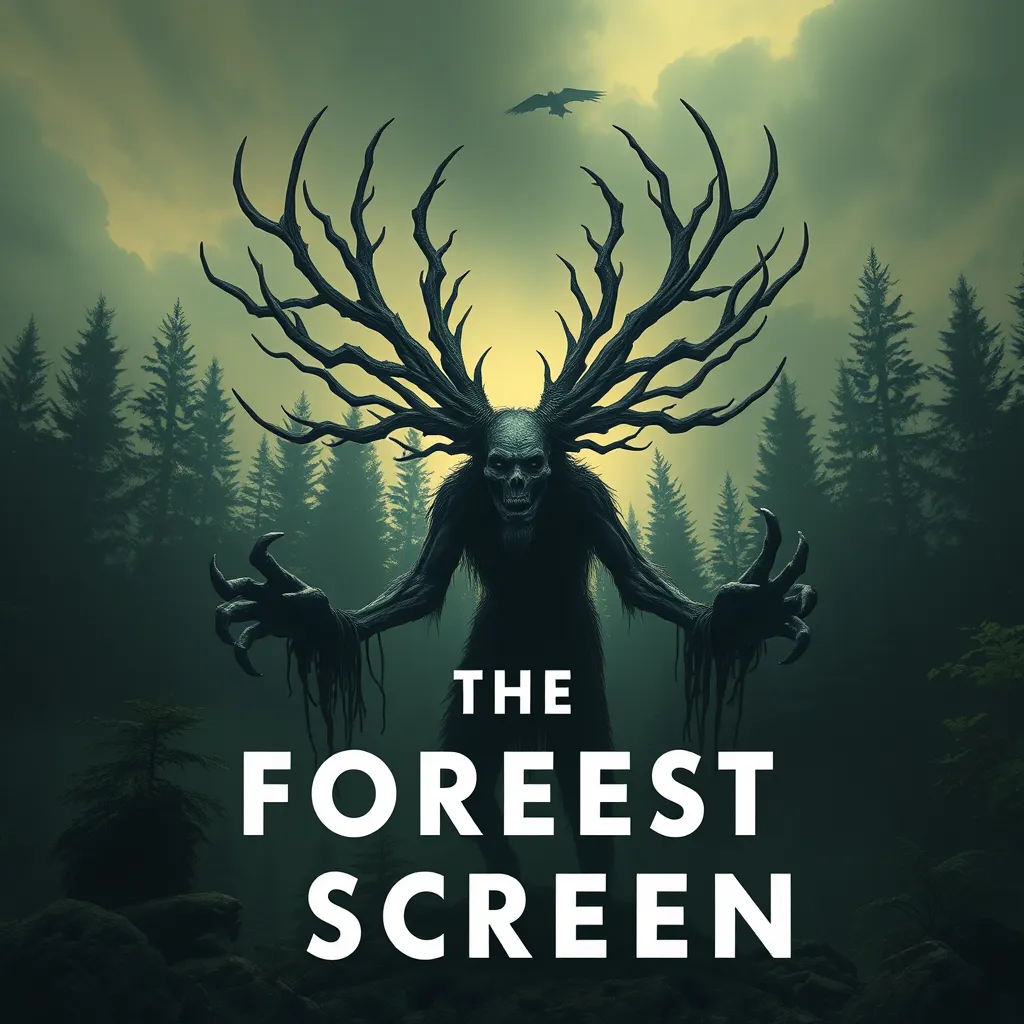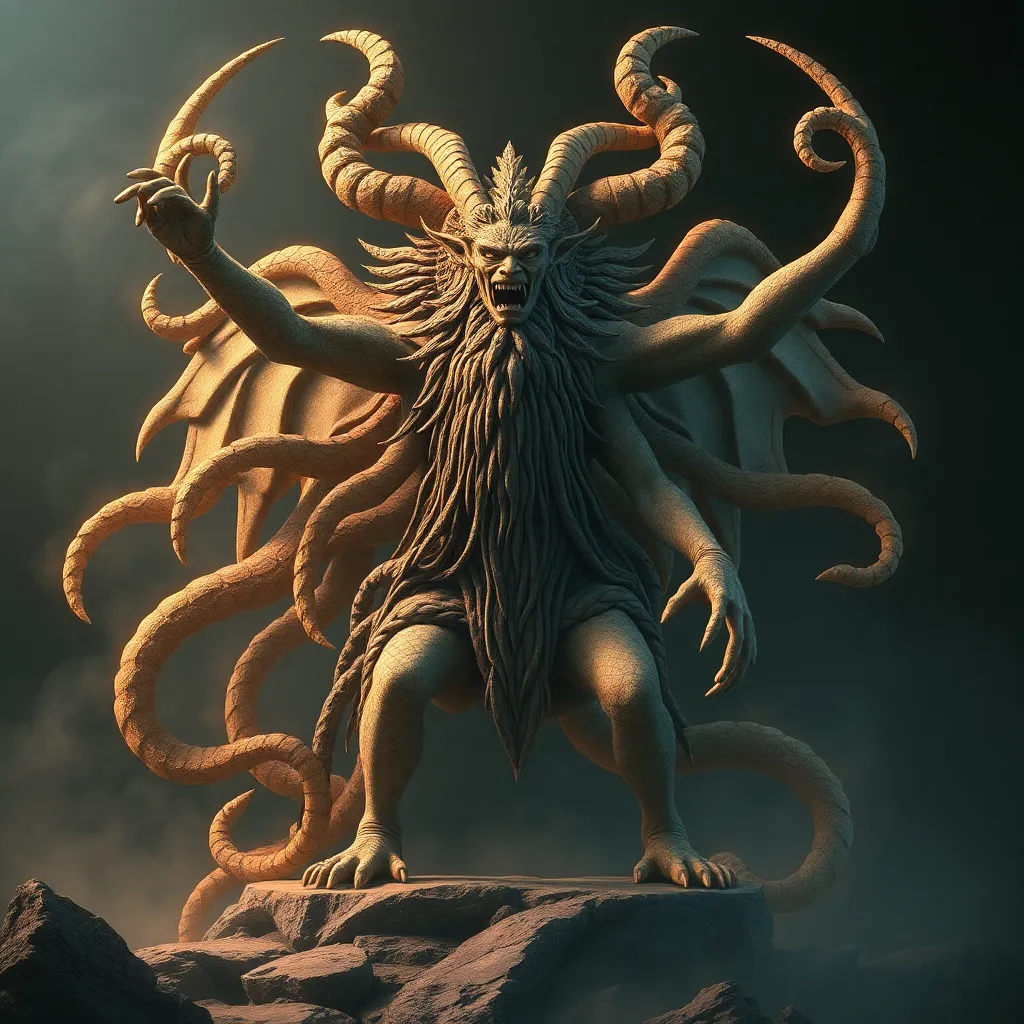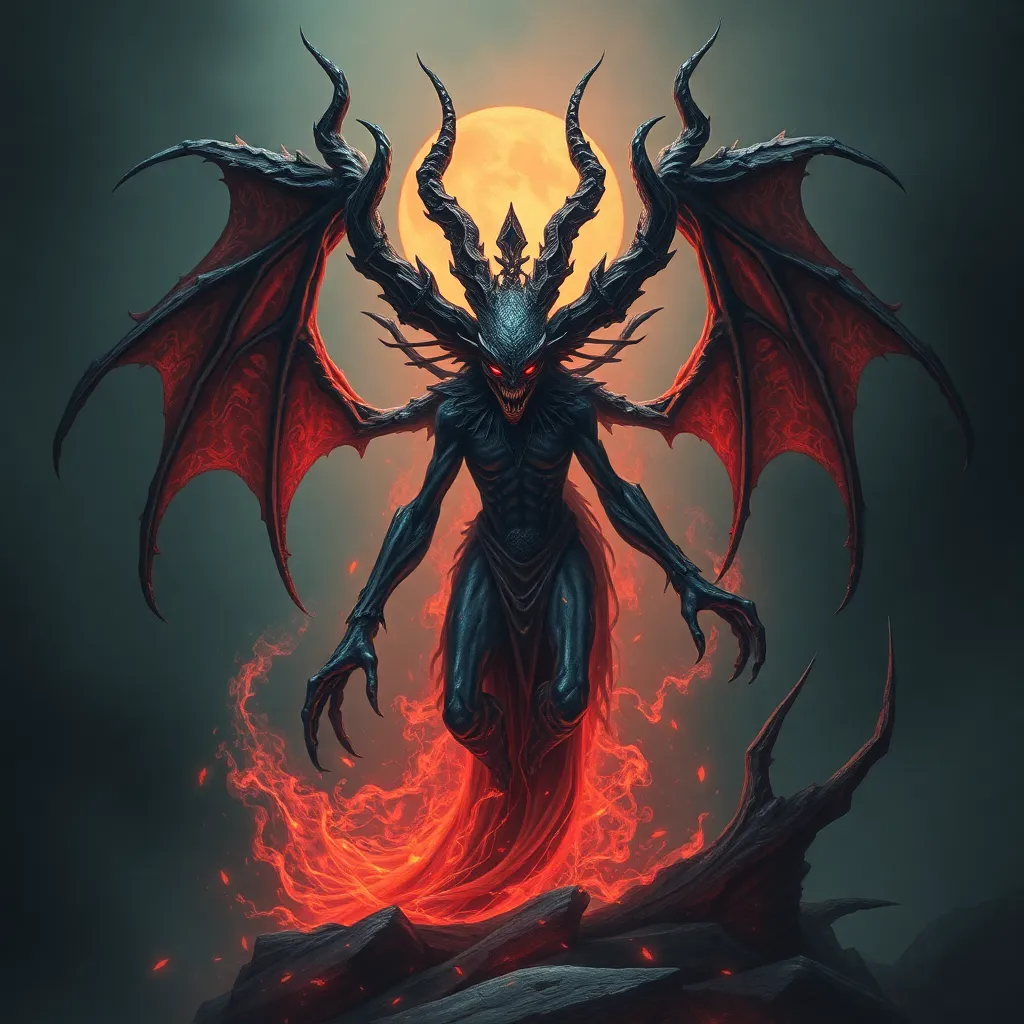From Forest to Screen: The Wendigo’s Impact on Modern Media and Horror
I. Introduction
The Wendigo is a legendary creature rooted in Algonquian folklore, often described as a malevolent spirit associated with winter, starvation, and greed. Traditionally depicted as a gaunt, emaciated being with an insatiable hunger for human flesh, the Wendigo has transcended its origins to become a significant figure in modern horror media.
This article explores the significance of the Wendigo in folklore and its evolution into various forms of modern media. By examining its origins, literary representations, cinematic portrayals, appearances in television, and influence on video games, we will uncover the key themes and cultural relevance of the Wendigo in contemporary society.
II. The Origins of the Wendigo Myth
A. Historical context in Algonquian culture
The Wendigo myth can be traced back to the Algonquian-speaking peoples of North America, particularly among tribes such as the Ojibwe, Cree, and Innu. According to folklore, the Wendigo was once a human who succumbed to the temptation of cannibalism, particularly during harsh winters when food was scarce.
B. Characteristics and symbolism of the Wendigo
The Wendigo is typically described as having an emaciated body, glowing eyes, and a heart made of ice. This imagery symbolizes not only physical starvation but also moral and spiritual decay. The creature embodies the consequences of insatiable greed and the loss of humanity.
C. Early accounts and interpretations of the Wendigo legend
Early accounts of the Wendigo often served as cautionary tales about the dangers of selfishness and the importance of community support during difficult times. These stories were used to instill fear and promote social cohesion among tribal members.
III. The Wendigo in Literature
A. Notable literary works featuring the Wendigo
- “The Wendigo” by Algernon Blackwood: A classic tale that explores the terrifying encounter between a group of men and the Wendigo in the Canadian wilderness.
- “The Last Wolf” by Stephen Graham Jones: A modern reinterpretation that blends horror with social commentary.
B. Evolution of the Wendigo’s portrayal in literature over time
Over the years, the Wendigo has evolved from a mere folklore figure into a complex symbol of human desires and societal issues. In contemporary literature, the Wendigo often embodies themes of isolation, madness, and the struggle against one’s darker impulses.
C. Themes of isolation, hunger, and madness in Wendigo narratives
Common themes in Wendigo narratives include:
- Isolation: Characters often find themselves in remote settings that heighten their vulnerability.
- Hunger: The insatiable hunger of the Wendigo mirrors human desires and the consequences of unchecked greed.
- Madness: Encounters with the Wendigo often lead to psychological unraveling, reflecting the fragility of the human mind.
IV. Cinematic Representations of the Wendigo
A. Analysis of key films that feature the Wendigo
- “Ravenous” (1999): A horror film that intertwines themes of cannibalism and the Wendigo myth, exploring the moral implications of survival.
- “Antlers” (2021): A modern horror that delves into the psychological and supernatural aspects of the Wendigo, drawing on themes of trauma and addiction.
B. Comparison of different portrayals and interpretations in film
While some films depict the Wendigo as a monstrous being, others explore its symbolic relevance, often representing the darker sides of humanity. The creature serves as a reflection of societal fears, such as addiction, mental illness, and the consequences of environmental neglect.
C. The Wendigo as a metaphor for societal fears and anxieties
In modern cinema, the Wendigo often embodies various societal anxieties, including:
- Addiction: The insatiable hunger of the Wendigo parallels the struggles of addiction and the loss of control.
- Isolation: The settings of these films often highlight the isolation felt in contemporary society, making the Wendigo a fitting antagonist.
V. The Wendigo in Television and Streaming Media
A. Exploration of Wendigo appearances in popular TV shows
- “Supernatural”: The Wendigo features in an early episode, presenting a classic take on the creature with a modern twist.
- “Channel Zero: Butcher’s Block”: This series offers a chilling interpretation of the Wendigo, blending psychological horror with folklore.
B. Impact on character development and plot progression
In television, the Wendigo serves as a catalyst for character development, often forcing protagonists to confront their fears and moral dilemmas. The creature’s appearance often leads to pivotal moments that shape the narrative arc.
C. Audience reception and cultural significance
The depiction of the Wendigo in television has garnered significant audience interest, prompting discussions about folklore’s relevance in modern storytelling. These portrayals resonate with viewers’ fears and anxieties, making the Wendigo a culturally significant figure in contemporary media.
VI. The Wendigo’s Influence on Video Games
A. Overview of video games that incorporate Wendigo lore
- “Until Dawn”: This interactive horror game features Wendigo-like creatures that embody the consequences of choices made by players.
- “The Long Dark”: A survival game that draws on the Wendigo mythos to enhance the atmosphere of fear and desperation.
B. The interactive experience of fear and survival
Video games allow players to engage with the Wendigo myth in an interactive manner, enhancing the horror experience. Players must navigate survival scenarios where their choices can lead to dire consequences, paralleling the themes of the Wendigo legend.
C. The Wendigo as a reflection of player choices and consequences
In games like “Until Dawn,” the Wendigo serves as a grim reminder of the repercussions of one’s actions, reinforcing the idea that greed and betrayal can lead to monstrous outcomes.
VII. Cultural Relevance and Evolution of the Wendigo
A. The Wendigo in contemporary discussions about mental health and addiction
The Wendigo has emerged as a symbol in discussions surrounding mental health and addiction, representing the struggle against overwhelming desires and the loss of self. Its portrayal in modern media often aligns with narratives that address these issues, making it a poignant metaphor for contemporary struggles.
B. How modern media reinterprets the Wendigo for new audiences
Modern interpretations of the Wendigo often seek to provide a nuanced understanding of its symbolism, moving beyond mere horror tropes to address deeper societal issues. This evolution reflects a growing awareness of the complexities of human behavior and the impact of cultural narratives.
C. The role of the Wendigo in discussions about cultural appropriation and representation
As the Wendigo has transitioned into popular media, it has also sparked discussions about cultural appropriation and the importance of respectful representation of Indigenous cultures. The portrayal of the Wendigo must navigate the line between honoring its origins and creating engaging narratives for diverse audiences.
VIII. Conclusion
The Wendigo’s journey from folklore to modern media illustrates its enduring impact on horror and popular culture. As a complex symbol of isolation, greed, and madness, the Wendigo continues to resonate with audiences, reflecting contemporary fears and struggles.
Moving forward, the Wendigo offers rich potential for further exploration in media, inviting creators to delve into its multifaceted nature while respecting its cultural origins. The Wendigo will likely remain a powerful figure in horror, challenging us to confront our darkest impulses and societal anxieties.



